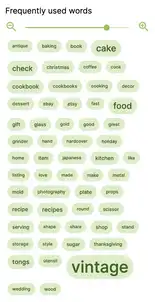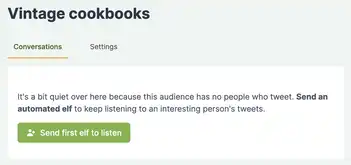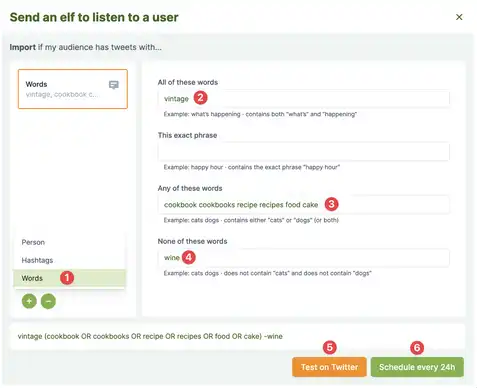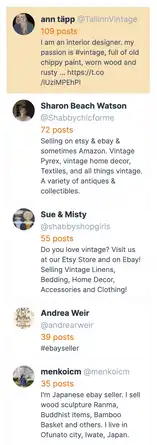How to get your first audience
November 27, 2021 · 7 minutes reading time
Table of contents
- Why is this important?
- What is an audience?
- How do you get your target audience?
- Find the people you want to serve
- Understand what the people need
- Select the conversations or people you want to start with
- Engage with your audience
- Conclusion
Why is this important?
Every founder or indie creator has the same problem:
- Who is the audience for whom I build?
- What is their currently most significant problem?
- Can I build something that solves that problem and sell the solution to them?
Without a clear understanding of your audience, chances are that you build something that nobody wants. Or, you will build nothing at all because you have no idea of who your audience will be.
With an audience that you’re really interested in, you’ll be much more motivated to serve them well. You will keep up the good work and build something that they love, won’t you?
So let’s get started.
What is an audience?
An audience is a number of people who share a common cause.
They could be interested in healthy nutrition, for example, or in making money online, or they want to organize their travel expenses … you name it!
As Arvid Kahl puts it:
Your audience should be the reason for your product to exist.
How do you get your target audience?
A little planning
In his article Finding an Audience for Your Side Business, Arvid describes a five-step method to find the ideal audience for your product – I recommend that you do this 5-step exercise once for your own audience.
After that exercise, you will have found a niche where your ideal audience lives. Arvid wrote that this niche will have the following positive properties:
- You’re aware of the niche
- You’re interested in the niche
- You’ve found interesting problems in the niche
- You’ve seen signs of interest to pay for solutions of the niche
- You’ve found that the niche is big enough for your business
A lot of doing
Now, when you have done the strategic exercise of the previous section, you are ready to go out into the world and try to contact people in your audience.
You will talk to them and find out about their problems. You will be able to understand them and serve them well with your product or service.
The process that I use for audience development has four steps that I call the FUSE:
- Find the people you want to serve
- Understand what they need
- Select the ones you want to start with
- Engage by joining one existing conversation
Let’s take these one by one.
Find the people you want to serve
My home network is Twitter. When I work with audiences, I try to find them on Twitter first.
So, open Get The Audience and login with your Twitter account. We’ll try to start with a roughly keyword-based audience (if you prefer, you can start with a person-based audience, instead).
For this example, click…
- Audiences
- New audience
Enter Vintage cookbooks as a sample audience name, and My first audience as a sample description of that audience.
Confirm with a click on Create Audience.

Now, send an “elf” (an automated creature that helps you find interesting tweets on Twitter).
Click on “Send first elf to listen”, remove the default “Person” query using the green minus button, and use these steps to make the elf listen to the topic of vintage cookbooks:
- Click the green plus, and Words to add a keyword-based query
- In All of these words, enter
vintage - In Any of these words enter
cookbook cookbooks recipe recipes food cake - In None of these words, enter
wine - Click Test on Twitter to get a preview of future results.
- Click Schedule every 24h, to make the elf run a new search every 24 hours, automatically.
Step 4 is optional, I only added it because you want “vintage” in the sense of “antique”, not the same word from the context of wine making. 😀
You will see that the screen fills with their tweets, and the Words pane fills with the words that they most often use in their tweets.
Understand what the people need
Now that we know that we got an initial good guess about our audience, let’s drill down into
- what they say
- who the influencers are
- when they are online (so that you can reach them)
Find out what they say
You can scroll through their tweets. When you click on a tweet, Twitter will open and show you exactly that tweet so that you could join the conversation, immediately. But wait, there’s more!
Look at the three tabs that you see on the right of the screen:
- Words
- People
- Time
In the Words tab, you see the keywords that your audience is using most often:

When you hover over a word in a keyword bubble, you will see a number: that is how often your audience used that word in their tweets.
Learn who they are
Click on the People tab on the right.
You will see lots of profile pictures of Twitter users. Hover over them. You will see their name and where they come from (e.g. “Sharon Beach Watson from Sun City, AZ”).
Click on their bio to see their tweets, only. That way, you can find out what they find important.
When you click directly on a profile picture, Twitter will open and show you exactly that profile so that you can follow that person or tweet to them.
Find the optimal time to engage
Click on the Time tab on the right.

A longer bar with a larger number might indicate that that hour of day is a good time to engage with your audience because they tweeted more during that hour.
In this example, 4pm looks like a time when most people in that audience are tweeting.
Select the conversations or people you want to start with
When you have spent some time in the audience explorer you will have a good feeling for what it is all about, who the key speakers are, and when it would be the best time to engage with them.
Now look at the tweets or people again and ask yourself:
At which point would I like to join the conversation?
Engage with your audience
Maybe you see an interesting tweet where a person mentions a problem, and you would like to help them with it. Just click on that tweet and reply to it from within Twitter.
Or do you see an interesting person? Click on that profile picture and then tweet at them to open a conversation!
Conclusion
You have seen how beneficial it is to spend some time on planning the discovery of jour audience.
You have seen how the FUSE process works: Find, Understand, Select, Engage.
And you have seen how easy and focused this becomes with the Get The Audience app. So, why not start right now?
Matthias
P.S.: Whenever you want to give feedback or when you need help, click on the online chat bubble at the bottom right of the screen. I’m excited to hear what you say!



